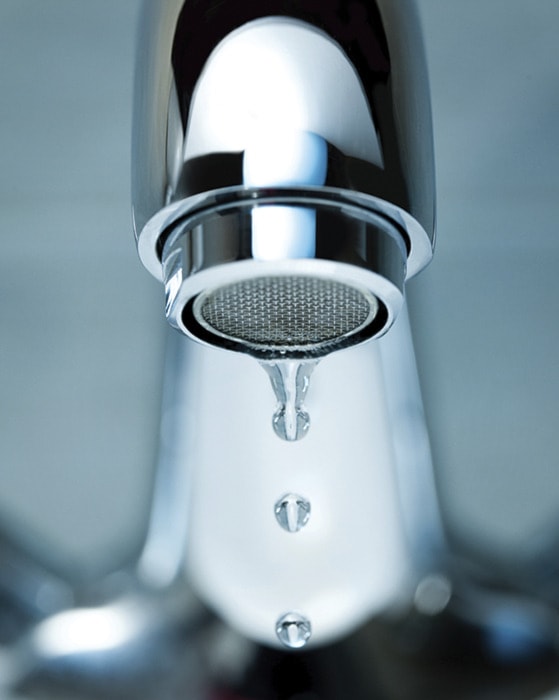There isn’t a lot of reason to be concerned about drinking water in Penticton, according to Interior Health, though there are some easy precautions residents can take if they are worried.
“I always encourage any homeowner, especially if their house is a pre-’80s build, to flush in the morning,” said Courtney Hesketh, environmental health manager with the Interior Health Authority. “First thing in the morning when I go to make coffee, I turn the tap on and I let it flow until I feel it has changed temperature. It really only takes about one minute.”
The comment comes after a report showing lead levels exceeding Canadian standards in tap water at three area schools, which was probably due to problems with the pipes or another factor in the buildings themselves, according to Mitch Moroziuk, director of operations for the City of Penticton.
The city has responsibility for water quality up to the property line and Moroziuk and water quality supervisor Brent Edge agree the water treatment plant and the distribution plant are performing well.
“We have never had an issue with water quality since this plant has been in operation,” said Edge, noting that water quality is tested regularly, and that in his testing over the 20 years the plant has been in operation, no test has exceeded the levels set out in the Canadian drinking water standards.
Hesketh has a slightly different reason for praising the quality of Penticton water. She says the concern is for aggressive water; water with higher acid levels and poor buffering in terms of mineral content like calcium.
“Aggressive water is more effective at leaching copper and lead out of pipes,” said Hesketh. “Penticton does not have aggressive water and actually has good buffering.”
The biggest concern for increased lead levels in water comes from leaching as the water sits dormant overnight — in the case of the schools, over the weekend — especially in buildings built before the 1980s, when lead-containing pipe solder was banned.
Hesketh said she was especially diligent about flushing the water before using it while she was pregnant, a critical time when heavy metals can interfere with development. Parents with children under six should also be careful.
“As we get older our body gets more efficient, our kidneys work really well and a little bit of lead from pipes is not very much of a concern. We can effectively get that stuff out of our system,” said Hesketh. But smaller children, she added, with smaller volumes, can struggle to get those heavy metals out of their system.
Hesketh also points out that the lead levels discovered in the school water, while exceeding standards, weren’t considered dangerously high. She commends the school district for their testing procedure, drawing water samples on a Monday morning, when lead leached into the water would be at its highest level, what she called the “worst case scenario.”
No lead is the best level, she said, but the school’s tests weren’t indicating a high risk.
“We have reviewed it with our medical health officer and he says this is a low risk,” she said, adding that the school district reacted appropriately by bringing in bottled water and continuing testing to determine the source of the water contamination.
“Our lead exposure is far greater from paint and other environmental exposures than it is from water. That is because we are very careful with our community water systems and ensuring they have an appropriate ph and buffering,” said Hesketh.
Children should also be taught to flush water from the tap before taking a drink, she said, admitting that goes against the now-common lessons teaching kids not to waste water.
It’s a balancing act, she said, adding that you don’t need to run too much water before you feel the temperature change indicating fresher water.
“We are really just trying to get that message out to people to do that quick flush in the morning, especially if you are concerned,” said Hesketh.
